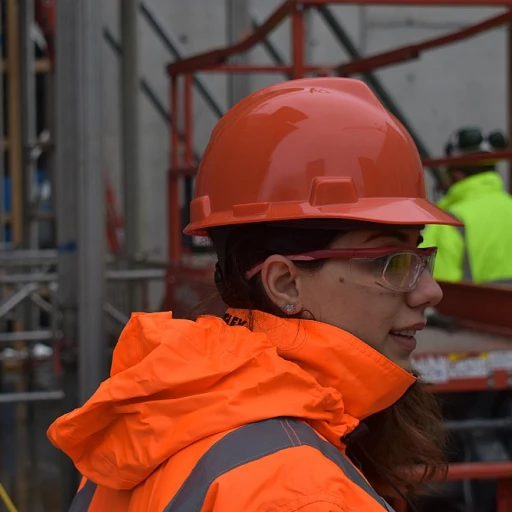
Understanding the Importance of Employee Appreciation
The Value of Recognizing Hard Work
Appreciating employees is not just a nice-to-have in today's work environment; it is essential. Recognition and appreciation foster a positive company culture, which can lead to increased employee engagement and retention. When team members feel valued, they are not only more productive but also create a more positive workplace atmosphere.
The Importance of Appreciation in Building Company Culture
Employee appreciation is integral to developing a vibrant company culture. When staff feel appreciated, they are more likely to collaborate effectively and support each other, contributing to a cohesive team dynamic. Ideas for appreciation initiatives, like staff appreciation days or personalized rewards, can significantly boost morale and satisfaction.
How Employee Appreciation Affects Work Outcomes
Recognition programs help employees feel appreciated and acknowledged for their efforts. This feeling of recognition can improve work outcomes by boosting motivation and encouraging team members to contribute their best. Over time, appreciation can lead to a more dedicated and efficient workforce.
For further insights on how to effectively honor your team, you might explore crafting nomination forms for employee recognition awards which ensure a fair and meaningful process.
Creative Appreciation Activities for the Workplace
Innovative Approaches to Boost Morale
Employee appreciation goes beyond the occasional verbal acknowledgment. It’s about creating a workplace environment where employees feel valued and recognized for their contributions. Here are some innovative appreciation ideas that can be seamlessly integrated into daily work routines, while injecting a spirit of fun and engagement.- Interactive Workshops: Organizing workshops that encourage creativity and learning is an excellent way to show appreciation. Offering sessions on topics ranging from personal development to new technology trends can make employees feel appreciated for their intellectual curiosity and willingness to expand their skill set.
- Virtual Recognition Walls: In a hybrid work culture, creating virtual walls where team members can post 'thank you' notes or recognition badges can foster a sense of unity. These walls can be a good reminder of the time and effort employees put into their work every day.
- Team Building Retreats: Organizing retreats offers a break from the office while encouraging team bonding and collaboration. Such outings can renew energy and motivation among staff, ensuring they feel appreciated and ready to tackle new challenges.
- Appreciation Day Events: Dedicating a day each year as Staff Appreciation Day where employees can enjoy activities like happy hours, competitions, and the distribution of gift cards can be very rewarding. Celebrating with various innovative activities will enhance the company culture and build stronger team connections.
- Personalized Rewards: Recognizing team members' hard work through tailored rewards shows thoughtfulness. Whether it's a subscription to a professional journal or a voucher to a favorite restaurant, these gestures show that the company recognizes individual accomplishments and interests.
The Role of Leadership in Employee Appreciation
The Catalyst Role of Leadership in Fostering Appreciation
Leaders play an integral role in fostering a culture where appreciation is not only encouraged but ingrained. Recognizing the significance of appreciation is one thing, but ensuring that it is actively practiced requires committed leadership. Leaders serve as the bridge between the company’s appreciation initiatives and the employees. By setting the tone from the top, leaders can inspire their teams to engage in and value recognition as a part of their daily work culture. One way leadership can manifest appreciation is through consistent recognition of the hard work and dedication of their team members. A simple gesture like acknowledging an employees' contribution during a team meeting or sending a thank you note can go a long way in making employees feel valued. Additionally, implementing structured recognition programs or fun appreciation day ideas, like "office happy hours" or "Friday fun activities," can boost employee engagement and build a more positive work environment. To make appreciation more tangible, leaders can introduce rewards such as gift cards or team-building events. These initiatives not only recognize individual efforts but also strengthen the team as a whole. When team members feel appreciated, they are more likely to contribute more effectively, fostering collaboration and unity. Moreover, leaders can utilize virtual platforms to extend appreciation, especially in remote or hybrid work settings. Virtual team meetings or recognition platforms can be used to create a space where staff appreciation is regularly communicated. By integrating appreciation into regular company communications, leaders can help build a positive company culture where everyone feels recognized and appreciated. Creating an environment of appreciation requires intent and consistency. To ensure it becomes part of the company culture, leaders must allocate time for regular check-ins with their teams to discuss appreciation strategies and gather feedback. Creating a culture where employees consistently feel appreciated is crucial for long-term success and for maintaining a motivated and engaged workforce. Leaders who effectively recognize and reward their employees not only enhance morale but also drive performance, making appreciation a powerful tool for nurturing successful and resilient companies. By understanding the importance of initiatives like a carefully crafted PTO request form, leaders can further enhance the employee experience by ensuring their staff feel supported in all aspects of their work life.Measuring the Impact of Appreciation Activities
Evaluating the Effectiveness of Appreciation Efforts
Recognizing employee's hard work is integral to fostering a motivated workforce, but how do businesses measure the impact of their appreciation activities? Ensuring your efforts make employees feel valued and appreciated helps strengthen the company culture, but quantifying these benefits requires attention to detail.- Employee Feedback: Regular surveys or feedback sessions can provide insights into whether appreciation efforts resonate with team members. Feedback allows companies to adjust their strategies to better meet their staff's needs and expectations.
- Employee Engagement Metrics: Tracking engagement metrics, such as turnover rates, absenteeism, and productivity, helps gauge how recognition programs impact employees. A decrease in turnover or absenteeism rates can indicate that appreciation activities are positively influencing the workplace.
- Recognition Program Participation: Monitoring participation in appreciation day events or employee recognition programs can reveal the level of staff involvement. High levels of participation suggest that these initiatives are positively received.
Challenges in Implementing Appreciation Activities
Overcoming Barriers in Implementing Thoughtful Appreciation
Implementing effective appreciation activities in the workplace can be challenging, yet it is crucial for cultivating a positive company culture and encouraging employee engagement. Here are some common hurdles and potential strategies to address them:- Budget Constraints: Allocating resources for recognition programs can be difficult, especially for smaller companies. Consider cost-effective solutions, such as virtual appreciation events, handwritten notes, or creating a "thank you" board in the office or online platform.
- Lack of Time: With busy schedules, finding time for staff appreciation can be tricky. Incorporating brief appreciation moments during team meetings or setting aside specific time, like a monthly "appreciation day," can help integrate these efforts into your normal routine.
- Difficulty Measuring Impact: Quantifying the effects of appreciation activities can seem daunting. Utilize feedback tools, such as surveys, and monitor changes in employee sentiment to evaluate the effectiveness of your initiatives.
- Consistency in Recognition: Inconsistencies in how employees feel recognized can hamper morale. Establishing a structured recognition program that includes a variety of ways, such as gift cards or team building events, helps ensure all team members are acknowledged for their hard work.
- Remote Work Challenges: Engaging remote employees in appreciation activities is essential. Host virtual happy hour sessions or schedule time for virtual appreciation shout-outs to ensure remote staff feels valued and part of the team.













